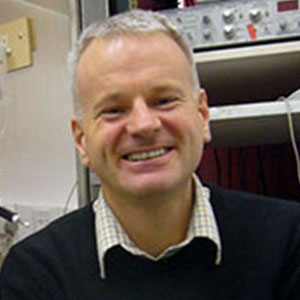Profile
I trained as a physician at Oxford and then London before undertaking pre and postdoctoral training in the UK and USA working on cardiac excitation-contraction coupling and the molecular properties of potassium channels. I returned to the UK and worked for a long time at University College, London as a Wellcome Trust Senior Research fellow in Clinical Science and subsequently Professor of Molecular Medicine. In 2011 I moved to Barts and the London School of Medicine and Dentistry to take up a Chair of Cardiac Electrophysiology. In recognition of this work I was elected a Fellow of the Academy of Medical Sciences in 2006. I have worked on funding committees for the British Heart Foundation, MRC, UKRI and Wellcome Trust. I was previously Head of Clinical Pharmacology at the William Harvey Research Institute.
Research
Group members
Fahad Al Hattali, Greg Funge, Aled Jones, Keat-Eng Ng, Muriel Nobles, Kaya Olczak, Nikayla Patel, Sonia Sebastian, Yaqob Taleb, Alison Thomas, Elena Tsisanova, Darren Wilson
Summary
My scientific interests revolve around the molecular properties and regulation of cardiac and smooth muscle cell excitability with a particular focus on cardiac arrhythmia, potassium channels and G-protein signalling. Specifically we have studied:
- ATP-sensitive potassium channels (KATP). In our most recent studies, and we have sought to understand the physiological function of unique populations of channels. To do this we have developed and validated unique murine genetic models where it is possible to conditionally delete the pore forming subunits in a particular tissue and\or at a certain time. We have shown that KATP in smooth muscle are important in controlling blood pressure, govern blood flow to key organs such as the brain and limit cardiac ischaemic damage. Endothelial KATP channels are constituted of Kir6.1, control calcium entry and potentially mediator release and limit cardiac ischaemic damage. KATP channels are also present in the sinoatrial node and can control heart rate and govern the response to hypoxia. We have previously studied the regulation of these channel complexes by protein kinases and anionic phospholipids and their propensity to form unique complexes through heteromultimerisation.
- G-protein gated inward rectifier potassium channels. There is substantial data showing that Kir3.0 channels are regulated by G-protein betagamma subunits and in many ways they are the canonical effector for such signalling. However our studies showed a central role for the alpha subunit and other proteins in shaping the cellular response and how this translates into the physiological control of heart rate.
- Cardiac Arrhythmia. I have broad interests in cardiac arrhythmia with a number of clinical collaborations on channelopathies such as the long QT syndrome, the role of cell signalling in arrhythmogenesis and cardiomyopathies. For example, we have shown that a large number of mutations in potassium channels fail to traffic properly to the plasma membrane in the long QT syndrome, the potential role of regulators of G-protein signalling in AF and that there are early changes in electrical phenotype in arrhythmogenic cardiomyopathy.
In ongoing work we are also examining candidate proteins that have emerged from GWAS studies in cardiovascular traits, the role of autonomic innervation in controlling cardiac excitability and examining the genetic determinants of novel ECG traits. We (Professors Tinker, Munroe and Lambiase) have established the QMUL-UCL Electrogenomics Group which meets on a monthly basis sharing progress across a variety of projects on the genetic underpinning of ECG traits and arrhythmia. The group now numbers over 10 academics from QMUL and UCL and includes geneticists, engineers, cardiologists and physiologists.
